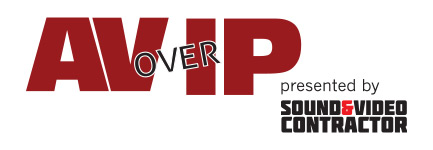

As the audio-video industry rushes to embrace IP, a secondary movement developed to change cabling from traditional coax, twinax, and proprietary cables to “category” cables. Most notably the favorite is Category 5E, which designed to support Gigabit Ethernet. These category cables have been specified by the TIA -568-B standard for nearly three decades. But if you look closely, you’ll find that the demands of higher speed Ethernet networks are introducing significant changes – changes that you should know about. Due to space limitations, we’ll discuss only copper cables. However, fiber is also undergoing significant change.
A Quick Review
For decades, we used and talked about Cat3, Cat 4, and Cat 5 cables. Cat 3 was called voice cable. Cat 5 was to be used for 100Mb/sec Ethernet. Cat 4 never really had a purpose and was rarely produced or sold. Eventually, almost everyone installed Category 5 cable for all applications. Then, Gigabit Ethernet created a need for a better cable than Cat 5 and the industry created Cat 5E (enhanced). The termination connector was the familiar RJ-45 plastic end with 8-conductors for the four pairs that were colored blue, orange, green, and brown. We were prepared to cable all the buildings into the future.
What Changed?
As the IT industry moved towards 10Gb/sec Ethernet, it was clear that Cat 5E could not be modified to support that speed. Changes began, lots of changes. Shielding was introduced. Care was given to the geometry of the cable. Heat became a factor as Power over Ethernet (POE) became a requirement. Most importantly, the traditional RJ-45 connector had to be discarded with shielded cables.
Where Are We Now?
There are several new copper cable types. Category 6, Category 6A, and Category 8. While Cat 6 and 6A have been specified as part of TIA-568-C, Cat 8 is part of a recently published standard, TIA 568-D. Nearly everything is changed about these new cables. The individual pairs are twisted much more tightly. There are spacer components inserted in the cable to make sure each pair remains in a fixed position relative to the other pairs. The shields can be solid, braided, continuous, or broken. These variations address alien cross-talk and heat dissipation needs. Another important consideration is that you will be encouraged to use a single vendor’s connector system. This is a means for the manufacturer to achieve performance above the standard rather than merely meet the standard. Among the three or four major cable vendors, there is interchangeability between connectors and patch panels you will place in your closets. However you might just barely meet standards. I had a discussion with Mike Good, a manager at Berk-Tek, which is one of the major cable manufacturers. He pointed out that the tuning of the connector to the cable is a critical matter. It’s where much of the signal distortion and loss is introduced.
Testing the cables also requires new equipment. These testers will check for an extensive series of potential faults by measuring cross-talk, loss, speed of the signal on each pair (called delay skew), and a dozen or more other factors. The cables will be assessed with frequencies from 1 Mhz up to either 250Mhz or 500Mhz. Note: don’t confuse the Mhz rating of the cable with the bit rate capacity. For example, a cable capable of meeting the specification up to 250 Mhz might carry 10 Gb/sec. That’s a result of the magic of modern encoding technologies.
What does all of this mean to an AVoIP installer?
If you are about to do a major digital signage, surveillance camera, or collaboration project that will involve core technologies of 1G and 10G Ethernet, you need to do a lot of homework on cable types, architectures and suppliers. Don’t be surprised if your architect or engineering firm is out of date on these features. They may need to use a consultant knowledgeable about cabling infrastructures. It would be good if the consultant is BICSI (Building Industries Consulting Services International) certified. A+ certification is not likely to be sufficient.







